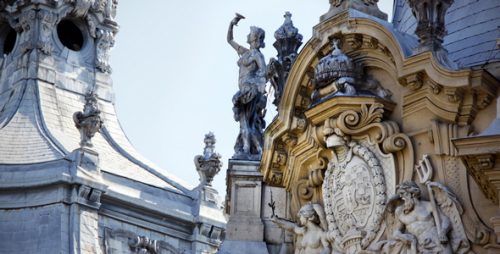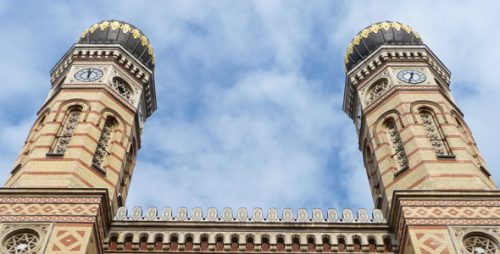Architecture
BUDAPEST ARCHITECTURE
You’ll find that Budapest’s unique blend of old and modern makes the city an architectural paradise. To appreciate Budapest’s present appearance, 1896 is an important date to remember, as this was the 1000th anniversary of the arrival of the Magyars to Hungary. Many buildings in Budapest were commissioned to celebrate the Millennium, such as the Underground Railway, Heroes’ Square, Parliament Building, Liberty Bridge and the Museum of Fine Arts. Soak up the architectural sights of Budapest’s Roman amphitheaters, Gothic-styled cathedrals, traditional Turkish baths, and so much more. Are you an architecture buff? For a one-of-a-kind architecture themed guided tour sign up for an Art Nouveau, Eclectic and Culture Tour. You may also be interested in Budapest 100, an annual event that features historic buildings built exactly 100 years ago.
Roman Architecture in Budapest
Architecture in the Roman Empire was a social art, meant to benefit the community. Many innovations by the Romans were influenced by this purpose, and soon a new architectural style was born. Examples include roads, aqueducts, baths, basilicas and amphitheaters.
The Roman Empire once covered a major part of today’s Hungary and there are many Roman ruins throughout the country. One of the main settlements was Aquincum, the ancestor of Budapest, located in the area known today as Óbuda. Aquincum consisted of two key districts: a military camp and a civilian settlement. To give you an idea of Aquincum’s size, today it takes four stops on the Suburban Railway (HÉV) to travel between these two areas. Remains include ruins of an amphitheater (with an arena that is larger than the arena of the Colosseum in Rome), mosaic floors, tombstones, statues and a bath complex (Thermae Maiores). While it’s nothing like Rome, if you are into ancient history, it’s worth visiting Aquincum.
Gothic & Neo-Gothic in Budapest
Gothic architecture saw the creation of soaring arches to draw the spirit of man up to heaven. Its characteristics include the pointed arch, the ribbed vault and the flying buttress. It is in the great churches, cathedrals, abbeys and in a number of civic buildings that the Gothic style was expressed most powerfully.
Sadly, there aren’t many original Gothic-style buildings in Budapest. The few remaining ones can be found in the Castle District. Buildings to look for are No. 18, 20 and 22 on Országház utca, which date back to the 14th century and No. 31 Úri utca, that has a Gothic façade that dates back to the 15th century. Another building with Gothic remains is the the Inner City Parish Church in Pest. The most characteristic Gothic-style buildings are actually Neo-Gothic, like the Parliament Building and Matthias Church, where much of the original material was used.
Renaissance & Neo-Renaissance in Budapest
The Renaissance style places emphasis on symmetry, proportion and geometry. It is a revival of certain elements used in ancient Greek and Roman architecture, first developed in Italy. One of the earliest places to be influenced by the Renaissance style of architecture was Hungary. The style appeared following the marriage of King Matthias Corvinus and Beatrix of Naples in 1476. Many Italian artists, craftsmen and masons came to Buda with the new queen.
Unfortunately, much of the original Renaissance palace disappeared during the varied history of Buda. To see some great Renaissance era ruins, take a trip to Visegrád, where King Matthias had a second, and equally beautiful, Renaissance-style Royal Palace. Budapest is rich in Neo-Renaissance, and buildings like the famous Opera House, the St. Stephen’s Basilica and the Hungarian Academy of Sciences belong to the list of must-see attractions.
Ottoman (Turkish) Architecture in Budapest
During the Turkish occupation (1541-1686), multiple mosques and baths were built in Buda. These were great examples of Ottoman architecture, which was influenced by Iranian, and to a larger extent, Byzantine architecture as well as Islamic traditions. It’s a mixture of the Mediterranean and the Middle East.
Budapest is in fact one of the few places in the world with functioning original Turkish bathhouses dating back to the 16th century. Another little known fact is that Budapest is home to the northernmost holy place of Islam, the burial place of a Turkish dervish called Gül Baba.

Baroque & Neo-Baroque in Budapest
The Baroque style designated the dominant style of art in catholic countries from the 17th century to the 18th century. Baroque originated in Rome and its success was encouraged by the Roman Catholic Church. It fit the church’s demands for an architectural style to communicate religious themes by appealing to the senses, often in dramatic ways. It also made a visible statement of the wealth and power of the Church. The emphasis was on colonnades, domes and the use of light-and-shade with qualities of richness, drama, vitality, movement, tension and emotional exuberance.

There are many Baroque-style buildings in Budapest and Hungary and one of the finest examples of original Baroque-style architecture is the Church of St. Anna in Batthyhány tér. An interesting part of Budapest is the less touristy Óbuda, which also has some beautiful historic buildings with original Baroque façades. The Castle District is another place to visit where the Holy Trinity Column, the National Dance Theater, the Royal Palace and many other buildings were built in Baroque style.
Classicism & Neo-Classicism in Budapest
Classicism puts emphasis on symmetry, proportion and geometry. The style is principally derived from the architecture of Ancient Rome, of which many examples remained.
Hungary had not one but two architects that were masters of the Classicist style. Mihály Pollack (1773-1855) and József Hild (1789-1867), built many beautiful Classicist-style buildings in the country. Some of the best examples are the Hungarian National Museum, the Lutheran Church in Deák Ferenc tér (both designed by Pollack) and the Basilica in Esztergom (a design by Hild). Interestingly, the most iconic Classicist-style attraction in Budapest, the Chain Bridge, was not designed by a Hungarian. It’s the creation of English engineer William Tierney Clark.
Romantic Style in Budapest
Romantic architecture stresses the aesthetic appearance. This is also the time of the Industrial Revolution and exploration on structure, such as the use of iron, begins.
Budapest’s two most beautiful Romantic-style buildings are the Great Synagogue in Dohány Street and the Vigadó Concert Hall on the Danube Promenade, both designed by architect Frigyes Feszl (1821-1884). Another noteworthy structure is the Western Railway Station, which was designed by August de Serres and built by the Eiffel Company of Paris.

Art Nouveau in Budapest
Art Nouveau encompasses many different art forms including architecture, applied arts and fashion, amongst others. This art movement of the early 20th century had many national schools in Europe and Hungary was no exception. Nevertheless, the Vienna Secession, the German Jugendstil, and Art Nouveau from Belgium and France are all reflected in the buildings constructed at the turn of the 20th century.
Art Nouveau in Hungary or Szecesszió is a blend of several architectural styles, with a focus on Hungary’s eastern origins. One of our leading Art Nouveau architects, Ödön Lechner (1845–1914), was inspired by Indian and Syrian architecture as well as traditional Hungarian decorative designs. One of his most beautiful buildings in Budapest is the Museum of Applied Arts.
